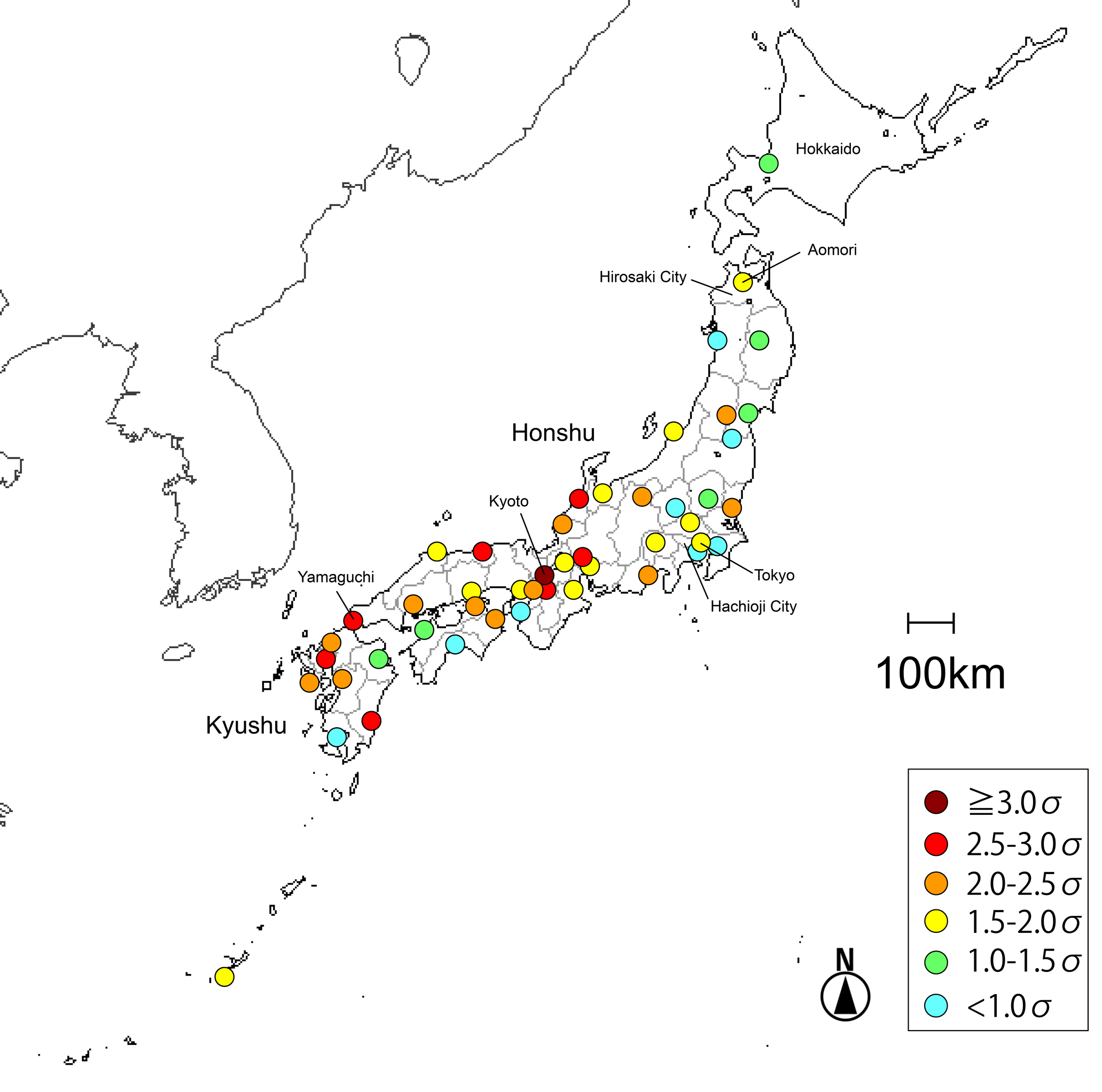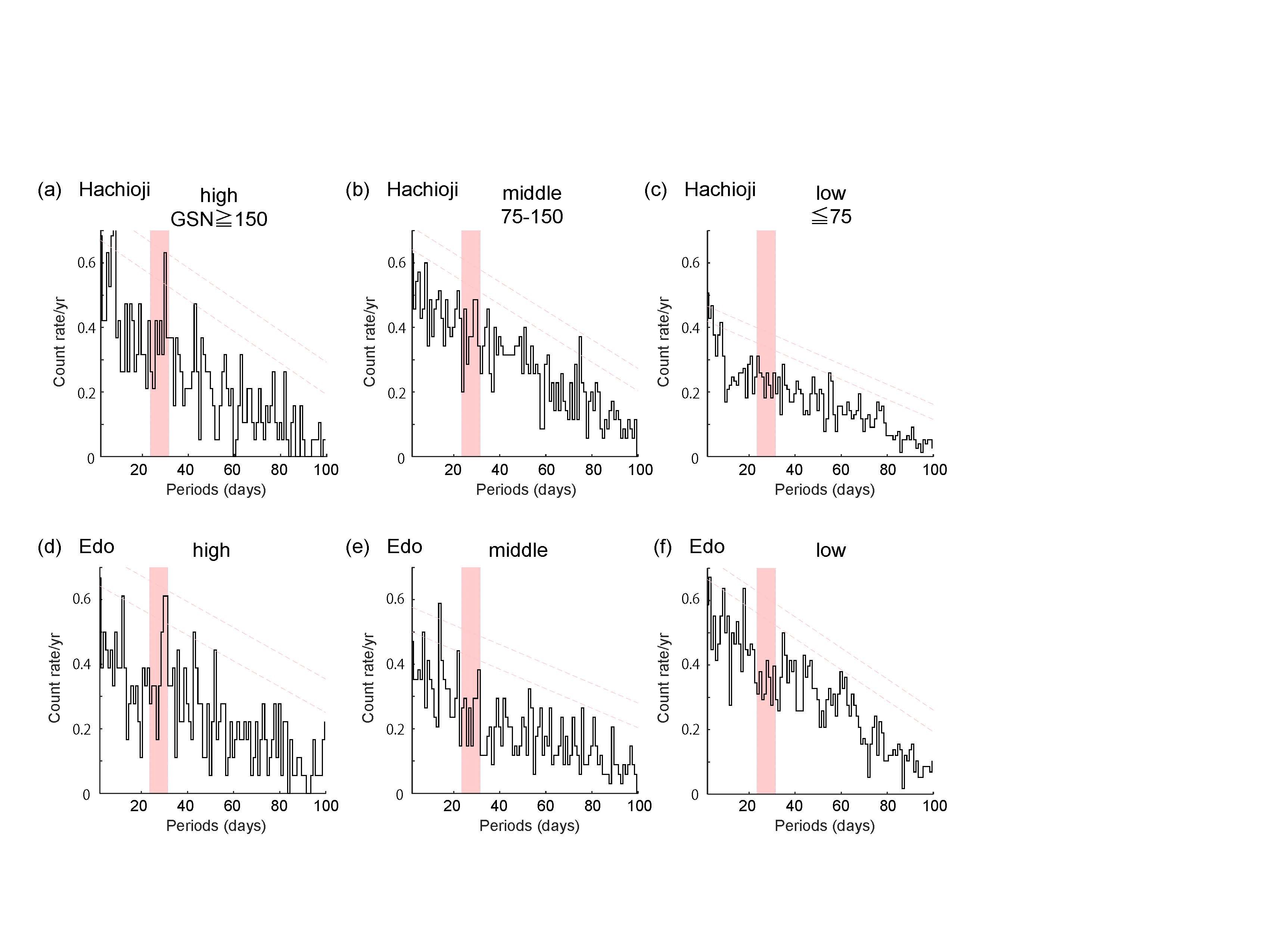Hiroko Miyahara (Humanities and Sciences/Museum Careers, Musashino Art University)
Solar activity and climate show correlations at the time scales of ten to several thousand years. However, the mechanisms for a solar influence on climate are not certain. The variation in total solar irradiance is too small to explain the whole Sun-Climate connection, and other influences such as solar ultraviolet and galactic cosmic rays have been studied.
The shortest activity cycle of the Sun is the 27-day cycle associated with solar rotations. Solar radiative outputs show a monthly-scale variation due to the migration of sunspots and faculae on the solar surface. Due to the occurrence of coronal mass ejections or the passage of corotating interaction regions on Earth, the flux of galactic cosmic rays also shows a monthly-scale variation.
In the previous studies, the 27-day variation had been found in the cloud activity around the equatorial region or in the lightning activity at Mt. Norikura in Japan. Examination of such signals in meteorological phenomena may provide an important clue to identify the mechanism of Sun-Climate connection. In this study, we studied summertime (May to September) thunder/lightning activity in Japan. We used the modern observational data as well as the records extracted from old diaries.
The thunder/lightning record since 1989 has shown that the 27-day variations are significant around the regions from Kyushu to the central part of Japan when the activity of the Sun is high (Figure 1).
In Japan, there are a few places we can carefully investigate the weather record back to the Edo period. Here we briefly summarize the results from the frequency analysis of thunder/lightning records found in Tokyo.
Based on the diaries kept by Ishikawa family (currently located in Hachioji city in the western part of Tokyo) and by the Hirosaki Domain, whose record keepers kept diaries both in Edo and Hirosaki, we extracted thunder/lightning records covering more than 150 years of the 18th to 19th centuries to examine the intensity variation of the 27-day period. Figure 2 shows the occurrence frequency for the periods of high solar activity (group sunspot numbers, GSNs, are greater than or equal to 150), middle solar activity (75 to 150 GSNs), and low solar activity (less than 75 GSNs). It is found that the intensity of the 27-day cycle in thunder/lightning activity is enhanced as the level of solar activity increases. The records of both Hachioji and Edo (central Tokyo) showed similar tendency. It is therefore suggested that the 27-day cycle in thunder/lightning activity is certainly originated in solar activity.
The analyses of the modern thunder/lightning data indicate that the signal of solar rotation in Japan has been migrated from lower latitude. It is likely that solar activity first influence around the low latitude regions and then they are propagated to the middle to high latitude regions. Further researches are needed to clarify which parameters of solar activity are the cause of such 27-day variations in the meteorological phenomena.
[1] Hiroko Miyahara, Chika Higuchi, Toshio Terasawa, Ryuho Kataoka, Mitsuteru Sato, Yukihiro Takahashi, Solar 27-day rotational period detected in a wide-area lightning activity in Japan, ANGEO Communicates, 35, 583-588, doi:10.5194/angeo-35-583-2017, 2017.
[2] Hiroko Miyahara, Yasuyuki Aono, Ryuho Kataoka, Searching for the 27-day solar rotational cycle in lightning events recorded in old diaries in Kyoto from the 17th to 18th century, ANGEO Communicates, 35, 1195-1200, doi: 10.5194/angeo-35-1195-2017, 2017.
[2] Hiroko Miyahara, Ryuho Kataoka, Takehiko Mikami, Masumi Zaiki, Junpei Hirano, Minoru Yoshimura, Yasuyuki Aono, and Kiyomi Iwahashi, Solar Rotational Cycle in Lightning Activity in Japan during the 18–19th Centuries, ANGEO Communicates, 36, 633-640, doi:10.5194/angeo-36-633-2018, 2018.

Figure 1. Intensity of the 27-day cycle in the summertime thunder/lightning activity at around the maxima of solar decadal cycles.

Figure 2. Occurrence frequency of thunder/lightning activity in Tokyo in the 18th to 19th centuries. The analyses are conducted for the periods of high solar activity (GSNs≧150), middle solar activity (75-150), and low solar activity (GSNs<75).
